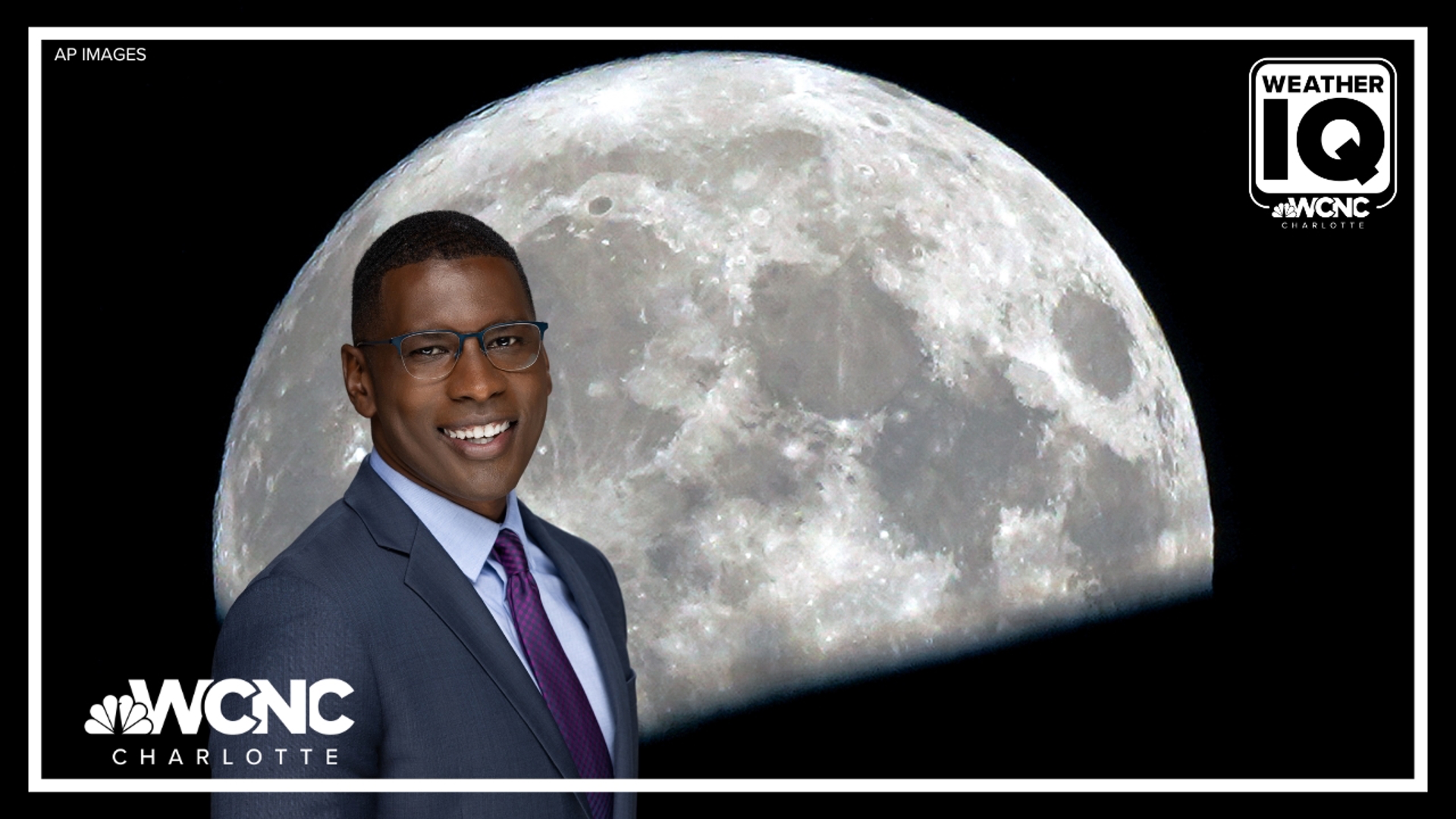CHARLOTTE, N.C. — A supermoon is coming to the Carolinas on Monday.
Although a supermoon is not rare, and a blue moon is not rare, the combination of the two occurring in tandem only comes around about every 10 years, on average.
The last blue supermoon was only one year ago in August 2023. But the next blue supermoon won't happen until 2037. This is why you'll see many catchy headlines online that elude it's a must-see event.
But in reality, to the average viewer, it will appear much like every other full moon. Just ever so slightly brighter and bigger to the most observant of moon-gazers. This will be most noticeable around moonrise and moonset, when the moon is at the bottom of the horizon.
Why the flashy names?
Supermoons refer to full moons that occur when the moon is within 90% of its closest approach to earth, known as its perigee. The Moon does not revolve around the earth in a perfect circle. It rather travels in an elliptical pattern. This is why we get supermoons and "micromoons."
Our August supermoon will be the first and furthest away of four consecutive supermoons, according to NASA. The moon will be about 224,917 miles away from earth on Monday.
Because the moon will be slightly closer to Earth, it can appear a little bit brighter. The distances of each supermoon vary, as do the brightness LEVELS. On average, supermoons disc can appear up to 8% bigger and 15% brighter than the average standard full moon. You will notice the biggest difference around moonrise and as the moon is setting.
Three more supermoons will follow this one, and will be on Sept. 18, Oct. 17, and Nov. 15. The number of supermoons in a calendar year can vary, but usually range from three to four. About 25% of all full moons are supermoons.
A blue moon commonly refers to the second of two full moons in a single calendar month, according to North Carolina-based NASA ambassador Tony Rice. While this isn't the second full moon this month, there is a less commonly seen definition that applies the label "blue moon" to the third of four full moons within the same astronomical season.
On average, there is a blue moon about every two to three years. Only about 3% of all full moons are blue Moons.
And if you were wondering: no, the moon will not appear blue.
The full moon Monday night will have one other special name to it: The sturgeon moon. This is a common name for the August full moon each year, which stems from the Native American names used for each full moon. This full moon occurred around the same time that sturgeon fish were more easily caught.
Contact KJ Jacobs at kjacobs3@wcnc.com and follow him on Facebook, X and Instagram.
With reporting from WXIA.

